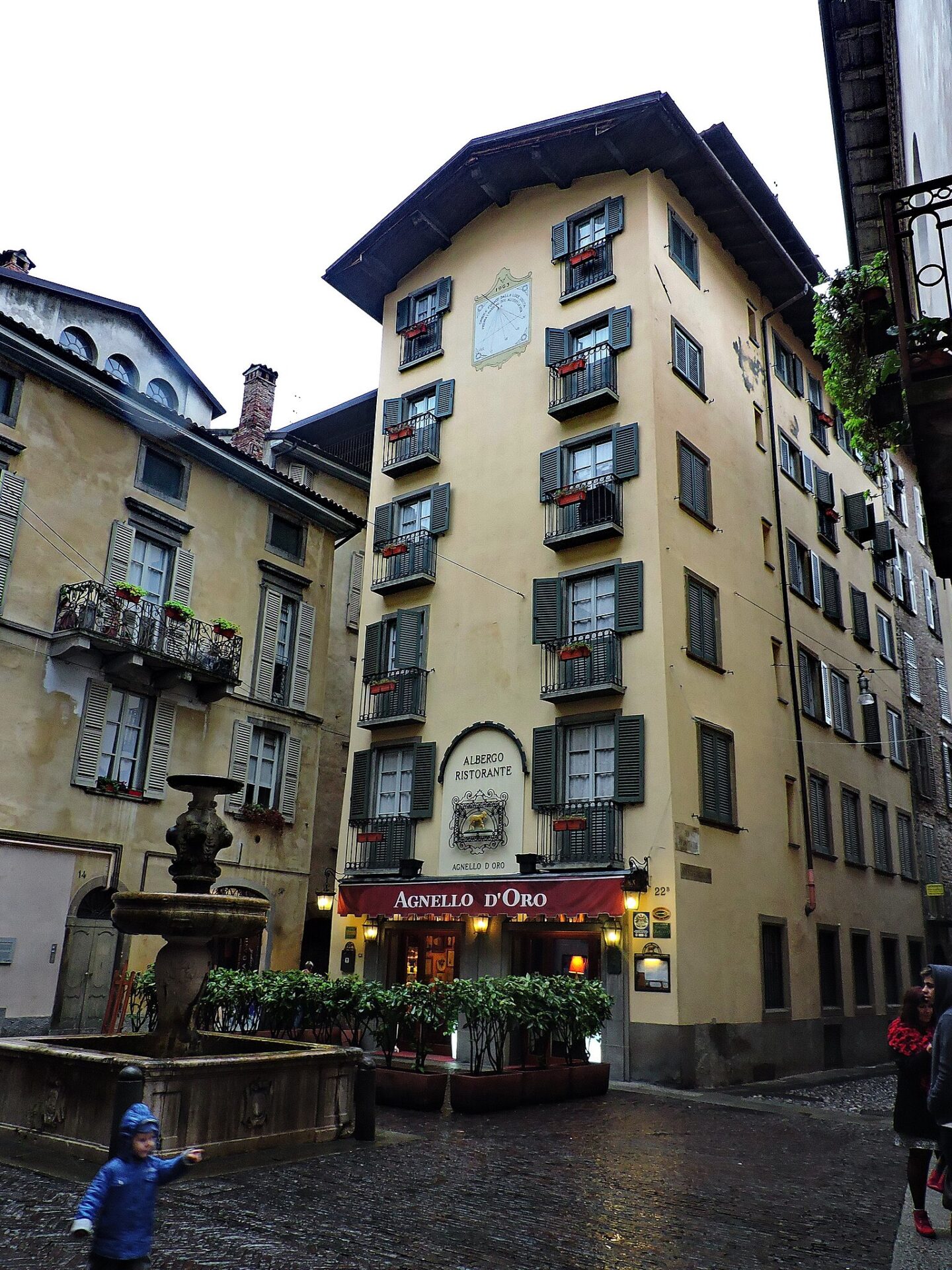Perched on a hill overlooking the Lombardy plains, Bergamo’s Upper Town (Città Alta) is a stunning medieval treasure that feels like stepping back in time. Walking through its narrow cobblestone streets last summer, I was immediately captivated by the perfectly preserved medieval architecture. The Upper Town offers visitors a magical blend of hidden courtyards, charming artisan workshops, and elegant arcades. These create an authentic Italian experience you won’t find in more touristy destinations.
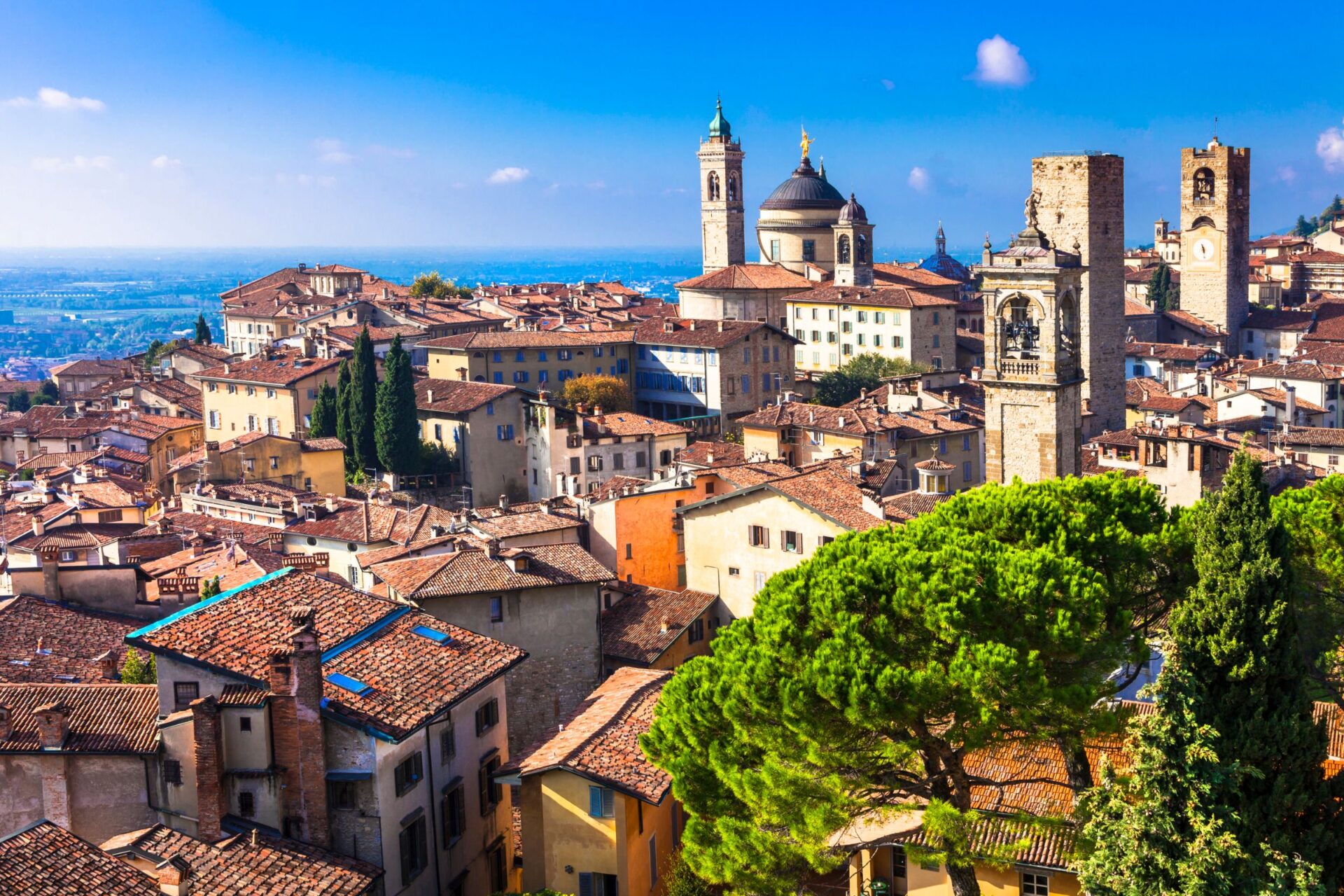
The medieval core of Bergamo is best explored on foot, allowing you to discover its secrets at your own pace. I loved wandering through the meandering pathways, stumbling upon quiet piazzas and ducking into local shops selling regional specialties. The Upper Town sits distinctly separate from the modern Lower Town, creating a unique two-level city experience that few Italian destinations can match.
My favorite aspect of Bergamo’s Old Town is how it balances its historic charm with everyday Italian life. Unlike some medieval towns that feel like museums, Città Alta pulses with local energy. Cafés spill onto squares, residents chat from windows, and the aroma of fresh pasta drifts from tiny restaurants hidden down side streets. When you visit, be sure to take time to simply wander and let the ancient walls tell their stories.
The Journey Begins: Arriving in Bergamo
Bergamo welcomes visitors with a unique dual-level layout that immediately hints at its fascinating history. The train station sits in the modern lower city, while the medieval treasure awaits above on the hill.
Reaching the Upper Town from the Train Station
When I arrived at Bergamo’s main train station, I found myself in the bustling lower town (Città Bassa). Don’t worry about the distance to the medieval center – getting to the Upper Town (Città Alta) is straightforward and part of the adventure.
The most scenic option is taking the funicular railway. This historic cable car has been climbing the steep hill since 1887, offering beautiful views along the 3-minute journey. Tickets cost about €1.30 one-way.
If you prefer public transportation, bus #1 connects the train station directly to Città Alta in about 15 minutes. Look for the sign “Colle Aperto” on the bus.
For active travelers, walking up is rewarding but steep! I’d allow 30-45 minutes for this uphill journey through winding streets.
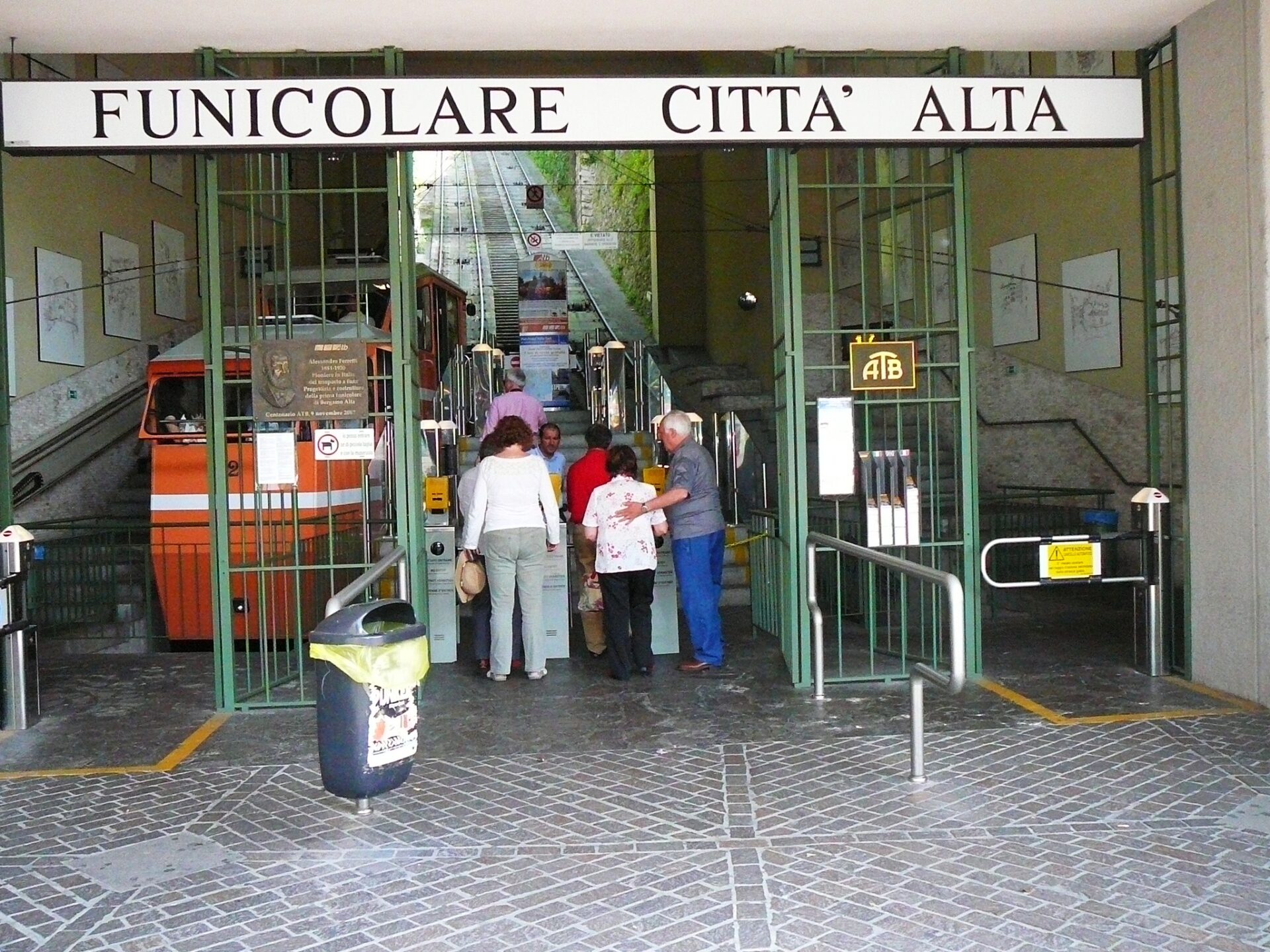
Navigating the Topography of Bergamo’s Old Town
Once you reach Città Alta, you’ll understand why the climb is worth it. The medieval core sits dramatically on a hill surrounded by impressive 16th-century Venetian walls. These defensive structures now provide perfect walking paths with panoramic views.
The Upper Town’s layout follows medieval urban planning, with narrow cobblestone streets radiating from central squares. The main piazzas – Piazza Vecchia and Piazza Duomo – serve as natural orientation points.
The topography creates a naturally compact city center that’s perfect for exploring on foot. Most major attractions sit within a 10-15 minute walk of each other.
Wear comfortable shoes! While the Old Town isn’t particularly large, the cobblestones and occasional inclines can be challenging in improper footwear. I learned this lesson the hard way during my first visit.
Stepping Back in Time: The Historical Heart
Walking through Bergamo’s Città Alta feels like entering a living museum where medieval architecture and Renaissance splendor blend seamlessly on cobblestone streets.
The Grandeur of Historic Buildings
As I wander through Upper Bergamo’s ancient core, the architectural magnificence is overwhelming. The Piazza Vecchia stands as the medieval heart of the city, surrounded by perfectly preserved buildings that tell stories centuries old.

The imposing Palazzo della Ragione, dating back to the 12th century, dominates the square with its elegant arches. Behind it rises the Campanone (Civic Tower), which still rings 100 times at 10 PM each night, just as it did when warning citizens of the closing city gates.
I’m always struck by the Palazzo Nuovo, now housing the Angelo Mai Library, with its magnificent neoclassical façade. The Contarini Fountain in the square’s center adds a musical element as water splashes against ancient stone.
Don’t miss the Basilica of Santa Maria Maggiore with its ornate interior that showcases Bergamo’s wealth during the Renaissance period.
Tracing History Through the Confraternities
Bergamo’s rich history comes alive through its confraternities, religious brotherhoods that shaped the city’s culture and architecture. The Misericordia Maggiore Confraternity, founded in 1265, built and maintained the stunning Basilica of Santa Maria Maggiore.
As I explore the narrow alleyways branching from the main square, I discover the former headquarters of these brotherhoods, marked by ornate doorways and religious symbols. These organizations weren’t just religious—they provided social services, healthcare, and education.
The confraternities’ legacy lives on in Bergamo’s museums. Visit the Donizetti Museum to see artifacts from the Pio Luogo della Pietà, a confraternity dedicated to caring for orphaned musicians.
Look for the distinct symbols of each brotherhood carved into building facades—a fascinating scavenger hunt through history that connects present-day Bergamo with its medieval past.
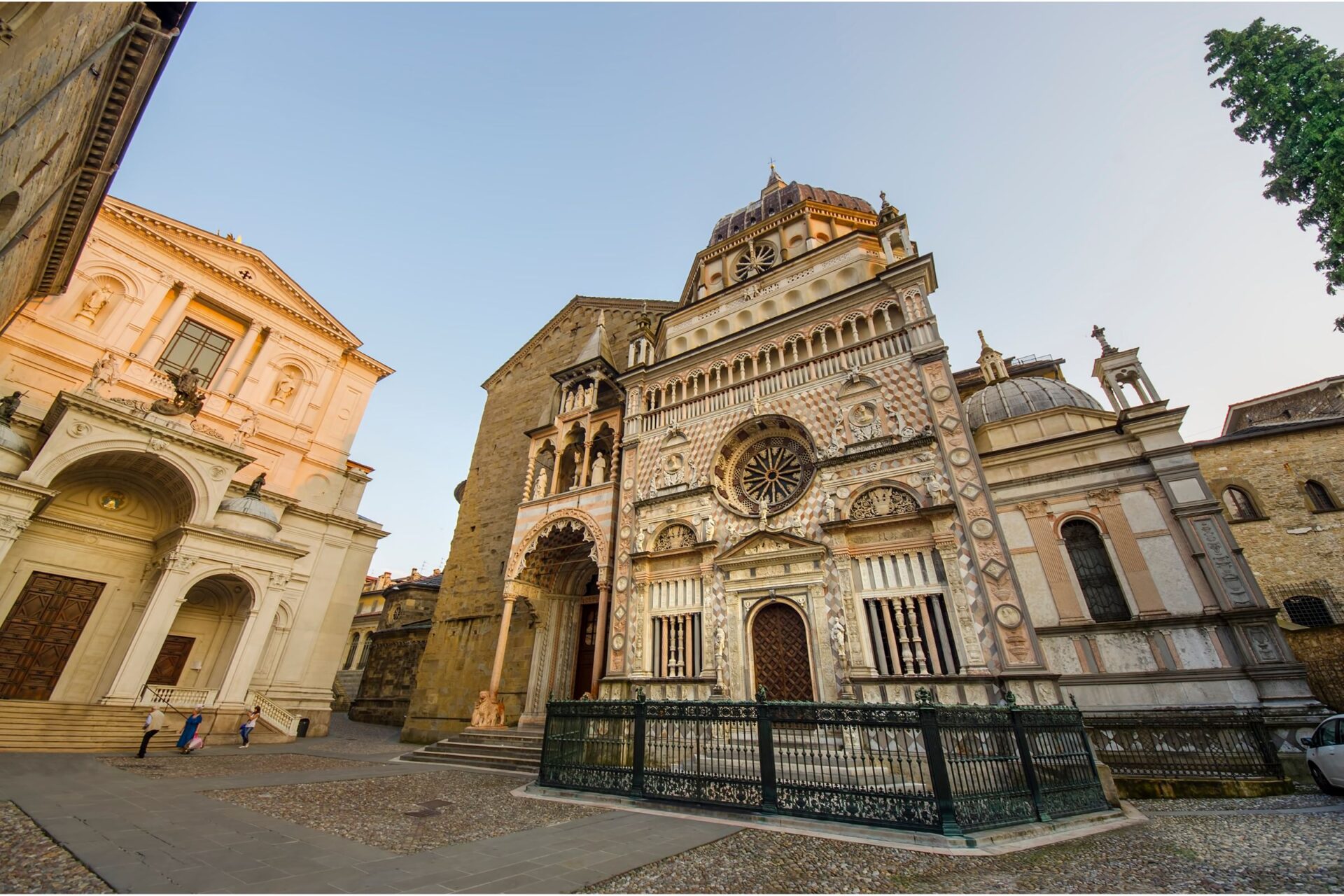
The Vibrant Life: Exploring the Pedestrian Zone
Walking through Bergamo’s Upper Town means stepping into a lively pedestrian zone where history and modern life blend beautifully. The car-free streets create a peaceful atmosphere where you can truly appreciate the medieval charm while enjoying today’s amenities.
Shopping and Leisure in the Modern Context
I love how the pedestrian zone in Città Alta offers a unique shopping experience unlike typical Italian city centers. Small boutiques sell local crafts, artisanal goods, and specialty foods that make perfect souvenirs.
You’ll find charming cafés with outdoor seating where locals gather for their afternoon espresso. I recommend stopping at one of these spots to people-watch while enjoying a traditional pastry.
The absence of cars makes the shopping experience much more pleasant. You can casually stroll from shop to shop without worrying about traffic. Even during busy tourist seasons, the pedestrian zone maintains its relaxed vibe.
Several small galleries showcase local artists’ work, providing a glimpse into Bergamo’s creative scene.
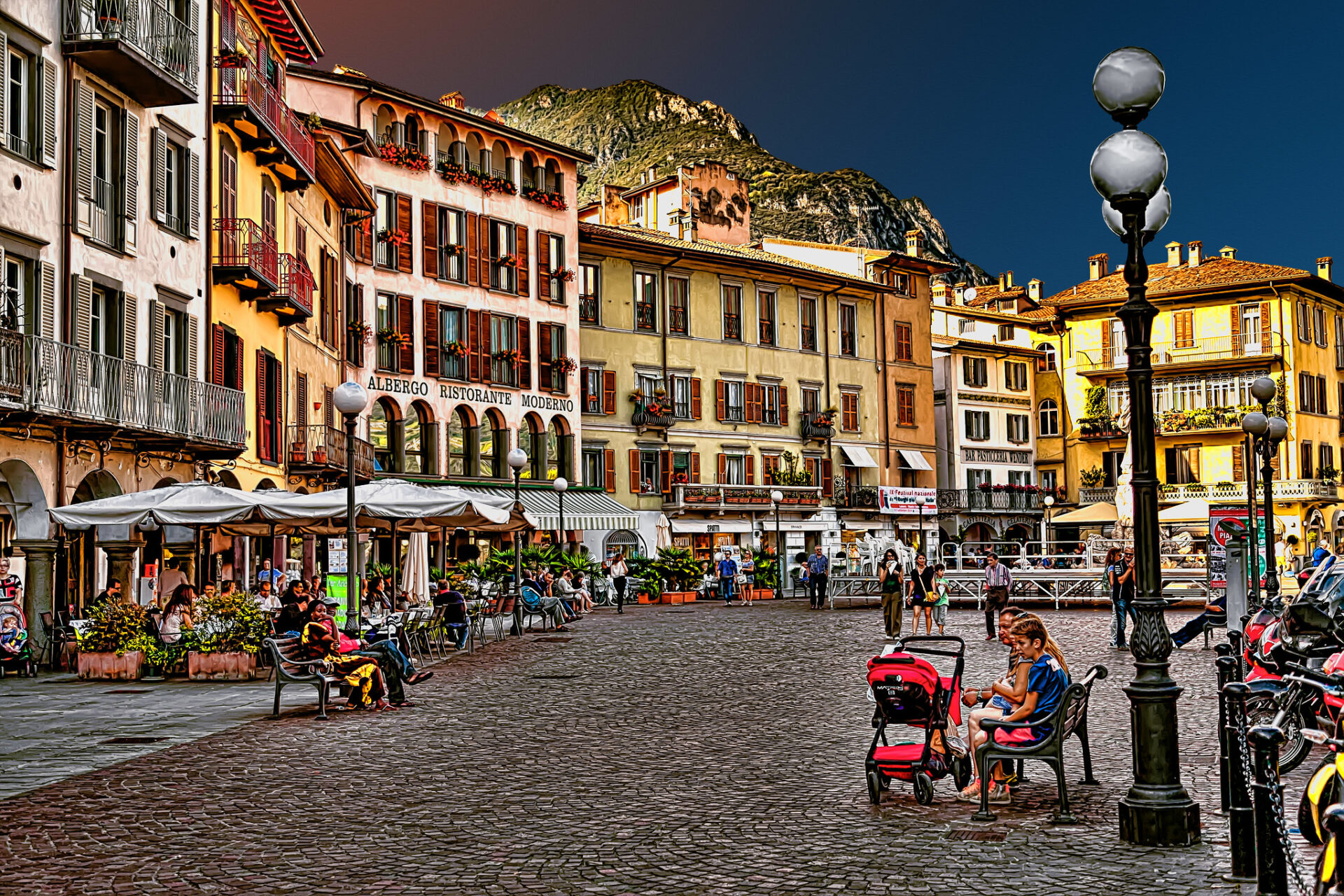
A Maze of Charming Side Streets
Wandering off the main thoroughfares reveals the true magic of Bergamo’s Upper Town. Narrow cobblestone side streets wind between ancient buildings, opening into unexpected small squares and hidden courtyards.
I discovered my favorite viewpoint by following a seemingly insignificant alleyway that suddenly revealed a stunning vista of the lower town. These side streets often lead to local treasures that most tourists miss.
Look for the small stone archways that connect different parts of the old town. These passages date back centuries and tell stories of how residents moved through their city.
Many side streets feature small shrines or decorative doorways worth photographing. Keep your camera ready for these architectural details that showcase the town’s rich history.

Tourist Essentials: Navigating Services and Information
When exploring Bergamo’s medieval Upper Town, knowing where to find help and information makes your visit smoother and more enjoyable. The city offers several resources to assist travelers in making the most of their time in this beautiful destination.
Essential Services and Tourist Information
I found the main tourist information office in Città Alta located in Via Gombito, near the heart of the Upper Town. They provide maps, brochures, and advice in multiple languages. The staff is incredibly helpful with recommending walking routes and explaining the city’s history.
Many hotels in Bergamo also offer concierge services that can arrange tours or provide local insights. I recommend picking up the Bergamo Card, which gives you access to public transportation, museums, and the funicular that connects Lower and Upper Town.
Free Wi-Fi hotspots are available throughout Città Alta, particularly in main squares like Piazza Vecchia. Public restrooms can be found near major attractions and in most cafés if you make a small purchase.
For emergencies, the European standard number 112 works throughout Italy. Most locals in tourist areas speak some English, but learning a few Italian phrases goes a long way.
A Global Connection: Bergamo Within the Wider World
While wandering through Bergamo’s ancient streets, I’m often struck by how this medieval gem connects to broader European history. The city’s architecture and culture reveal influences from far beyond Italy’s borders, creating a rich tapestry of international heritage.
From Zurich to Cyprus: International Influences
Walking through Città Alta, I notice architectural elements that remind me of Swiss precision similar to what you’d find in Zurich. The meticulous stonework and defensive structures show clear northern European influences. These weren’t random adoptions but deliberate choices made during centuries of trade relationships.
Venetian rule left perhaps the most visible mark on Bergamo. The impressive 16th-century walls encircling the Upper Town were built by Venice as part of their defensive network stretching all the way to Cyprus. These massive fortifications protected valuable trade routes connecting northern Italy to Mediterranean ports.
The ornate facades of palaces and churches throughout Bergamo blend Italian Renaissance styles with Byzantine elements seen in Cyprus and other Mediterranean outposts. This mix creates the unique visual character that makes exploring the Upper Town so rewarding.
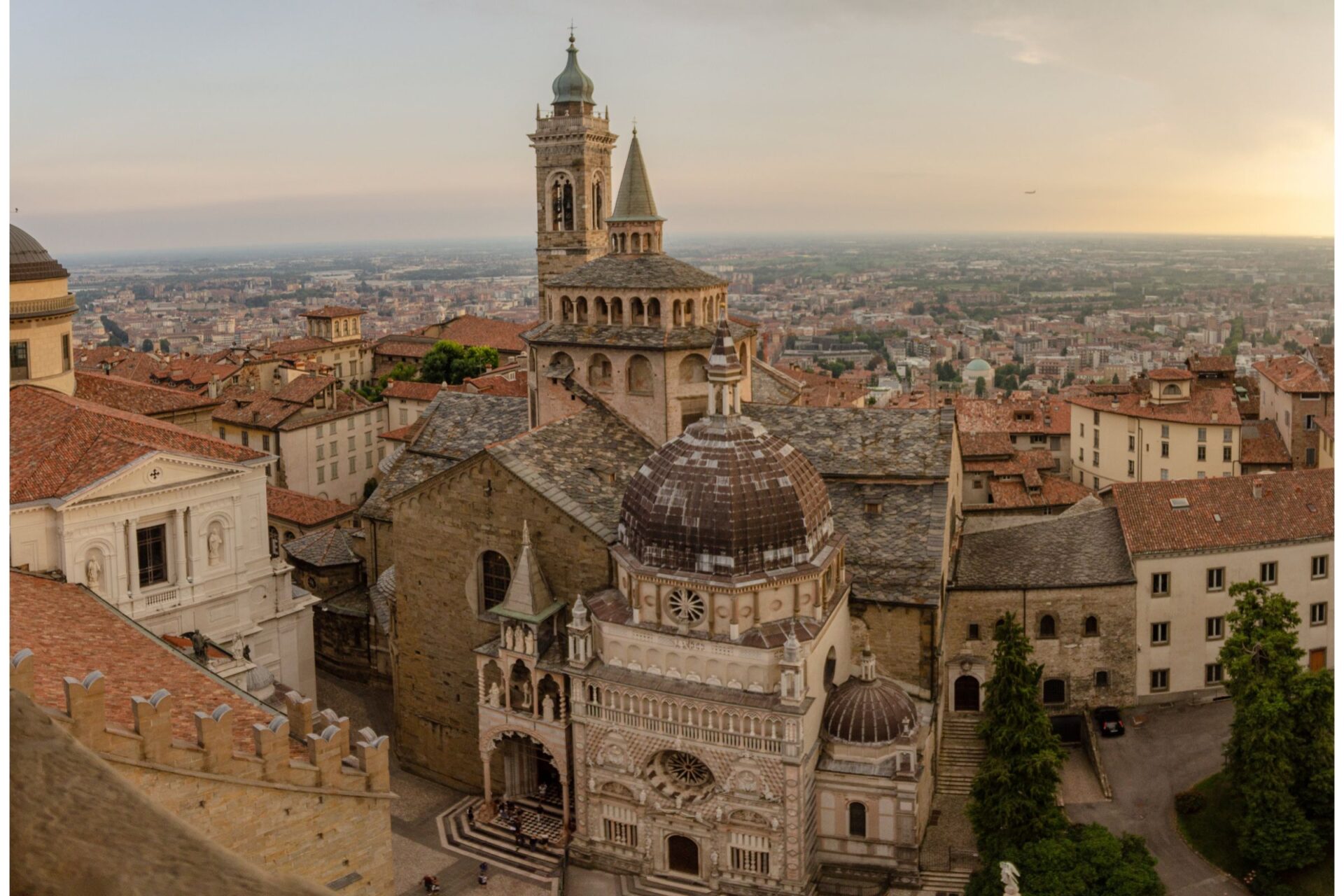
Comparing Acre and Famagusta: A Historic Perspective
Bergamo’s strategic position shares similarities with other historic fortified cities. Acre in Israel and Famagusta in Cyprus also served as crucial defensive points along important trade routes. The defensive walls of Bergamo follow similar military engineering principles to those found in these Mediterranean strongholds.
I’ve explored the narrow lanes of both Acre and Famagusta. Bergamo’s Upper Town evokes the same sense of stepping through a medieval time portal. All three cities feature imposing gatehouses controlling access to their elevated cores.
The religious buildings in Bergamo’s Città Alta, with their blend of Romanesque and Gothic styles, mirror similar architectural developments in Acre during the Crusader period. Meanwhile, the grand piazzas of Bergamo serve the same community gathering function as those found in Famagusta’s historic center.

